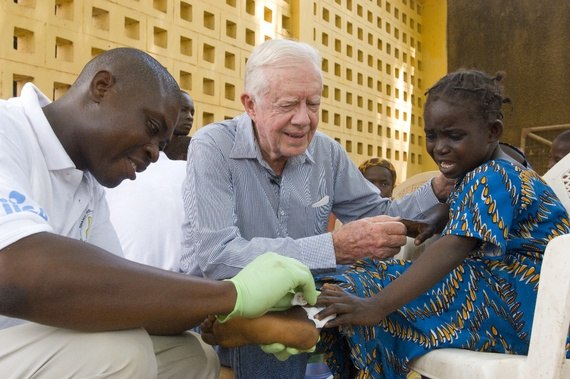In 1986, the painful Guinea worm disease plagued more than 3.5 million people in Africa and Asia. Last year, there were only 126 cases left, and thanks to the Carter Center’s nearly 30-year campaign, the infectious disease is about to be eradicated.
Continuing efforts may soon rid the world of this tropical disease forever, making it only the second human disease ever eradicated, after smallpox. It will be the first disease to be eradicated without the use of a vaccine or medicine.
President Carter reported the latest Guinea worm numbers this week during a New York press conference to open Countdown to Zero: Defeating Disease, a new exhibition on disease eradication at the American Museum of Natural History created in collaboration with The Carter Center.
Considered a neglected tropical disease, Guinea worm disease (dracunculiasis) is contracted when people consume water contaminated with Guinea worm larvae.
The ancient disease is being wiped out mainly through community-based interventions to educate and change behavior, such as teaching people to filter all drinking water and preventing contaminated people from entering water sources.
The Carter Center, together with ministries of health, local communities, and other partners, has reduced cases by more than 99.99 percent since 1986. The Center estimates that the eradication campaign has averted more than 80 million cases among the world’s poorest and most neglected people.
“The potential for disease eradication to permanently improve quality of life worldwide is tremendous,” said eradication expert Dr. Donald Hopkins, Carter Center vice president for health programs.
Story tip from Craig Withers




















